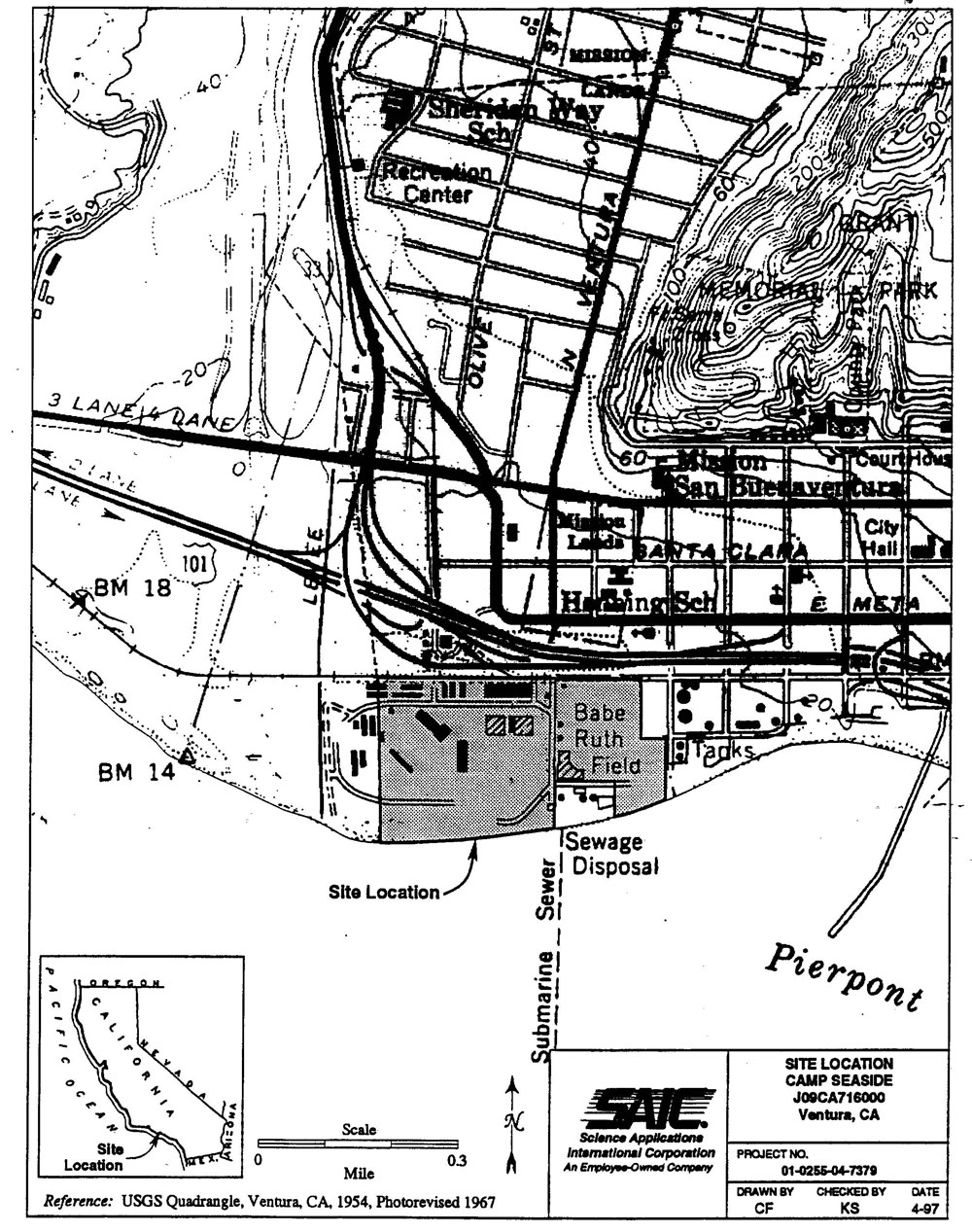
As a mobile anti-aircraft artillery unit, the use of the site-in the 1930s by the 251st Coast Artillery Regiment was predominantly bivouac training. Artillery practice for 3-inch and 37mm anti-aircraft guns as well as .50-caliber machine guns was conducted off site.
Authorized use of the park by the 196th Field Artillery Regiment (redesignated 144th Field Artillery Regiment) as the local National Guard unit included the use of the Pavilion as an armory and drill hall, and the warehouse for truck storage. During World War II, the site was used as the command post for all the artillery batteries and searchlight units between Point Mugu and Santa Barbara. Improvements during the War included the construction of a number of buildings (barracks, small mess halls with unlined grease traps, tent houses), three grease racks, an incinerator, and numerous gravel roads.
Use of the Pavilion and warehouse by the 144th Field Artillery Regiment, subsequent to original lease, was terminated on 17 March 1941, due to federalization of the unit. The lease of the site by the War Department was terminated on 15 May 1945. No improvements remain from military use of the site. The present use of the site is primarily for the annual agricultural fair but also includes other weekend exhibits and expositions.

Source: US Army Corps of
Engineers, Los Angeles District
|
|
|
|
| Army of the United States Station List | 1 June 1943 |
|
Corps of Engineers History - Ventura Tactical Battery 2
The Army acquired use of the property from the County of Ventura by a permit agreement on 4 August 1942. The agreement specified the size of the property as 10 acres.
The site was initially established by the 144th Field Artillery Regiment, later to be replaced by the 56th Coast Artillery Regiment. The main purpose of the site was for coastal defense but activities also included rifle range practice and "parade ground" drills. Improvements on the lo-acre site included an undetermined number of buildings of wood-frame and tar-paper construction (at least 21, a rifle range, asphalt road(s), an ammunition magazine, and two Panama gun mounts for two 155-mm guns. Practice firing of the guns included monthly live ammunition firing at towed targets offshore.
3. The permit agreement was terminated by the War Department and custody of the property was returned to the County of Ventura on 15 May 1945. The site is currently the location of the Seaside Wilderness Park, which is part of a joint coastal dune preservation and enhancement project of the City of Ventura, the Nature Conservancy, and the State Department of Parks and Recreation. Remaining Army improvements(i.e., concrete gun mounts) are not beneficially used.
The first 155-mm battery at Fort MacArthur was Battery Hogsdon.
This battery of two 155 mm GPFs was built in 1928 and located
in front of the Korean Friendship Bell on the Upper Reservation
north of Point Fermin. One of these mounting rings is visible
in front of Battery 241. The other is used as part of a playground.
In 1942, a program began to place 155-mm batteries from Santa Barbara to Bolsa Chica. Each battery consisted of two or three mounting rings, known as Panama Mounts, that allowed the guns to be rotated 360 degrees, and underground ammunition storage bunkers and sleeping quarters for the troops. The batteries were transferred in 1943 and 1944 and cost on average about $10,000 each.
Locations of these Panama Mounts and the 155-mm batteries are: Pacific Palisades, Playa Del Rey, El Segundo/Hyperion, Redondo Beach, Rocky Point, Long Point, Fort MacArthur, Bolsa Chica, Costa Mesa, Port Hueneme, Oxnard, Ventura and Santa Barbara. Some of these locations were built for 3 guns but only two were delivered. Some of the installations are still visible in
